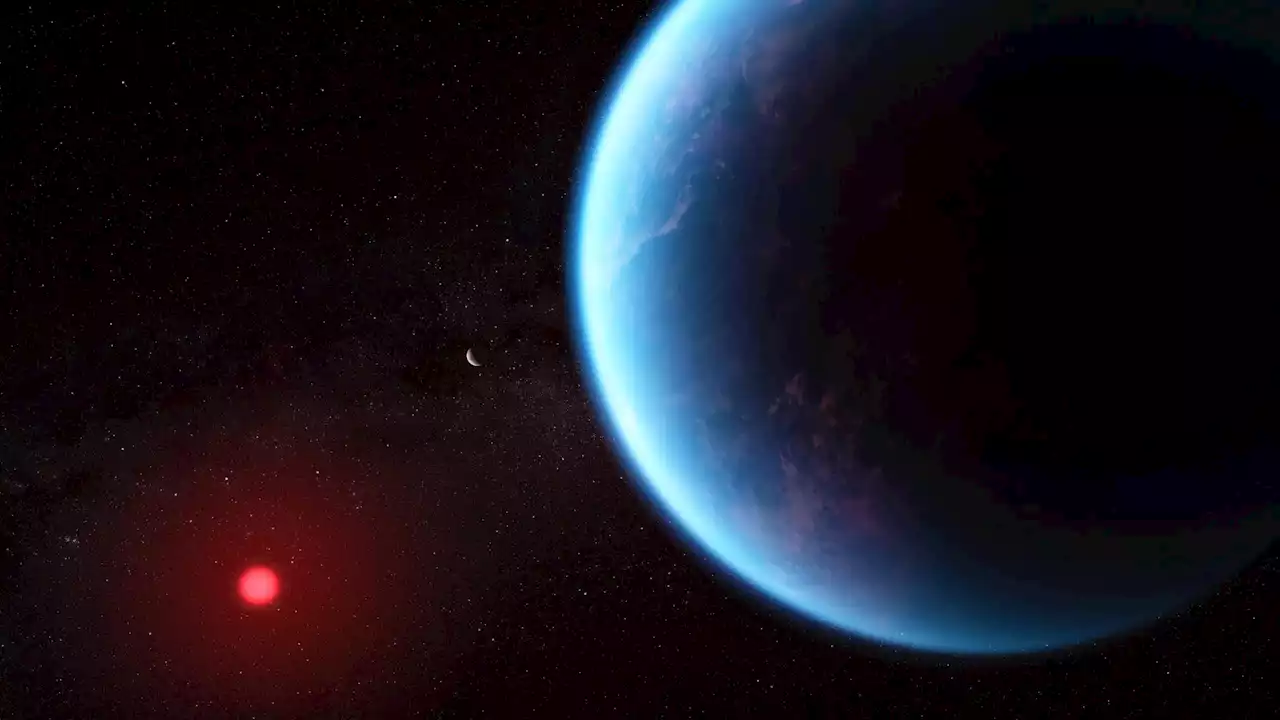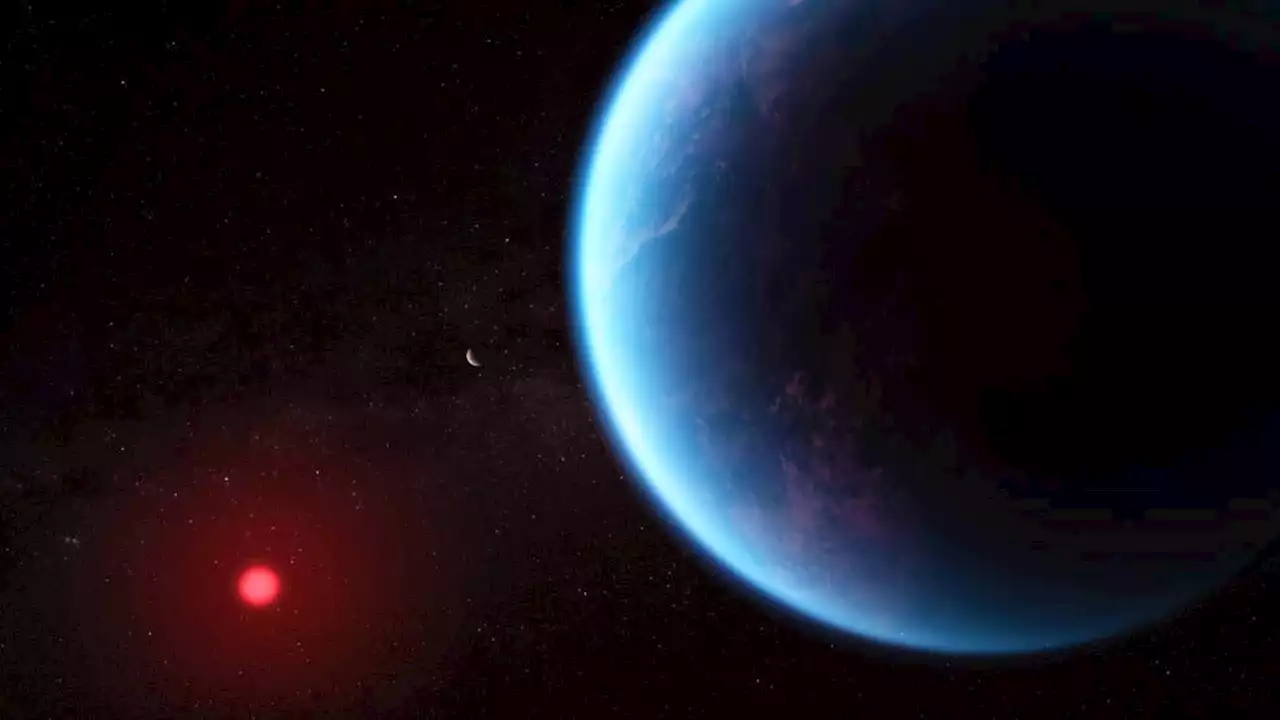The rate at which the universe is expanding, known as the Hubble constant, is one of the fundamental parameters for understanding the evolution and ultimate fate of the cosmos. However, a persistent difference called the 'Hubble Tension' is seen between the value of the constant measured with a wide range of independent distance indicators and its value predicted from the big bang afterglow.
The rate at which the universe is expanding, known as the Hubble constant, is one of the fundamental parameters for understanding the evolution and ultimate fate of the cosmos. However, a persistent difference called the"Hubble Tension" is seen between the value of the constant measured with a wide range of independent distance indicators and its value predicted from the big bang afterglow.
is expanding—a number called the Hubble constant. Our sign is written into the stars in distant galaxies.
"Hubble has better visible-wavelength resolution than any ground-based telescope because it sits above the blurring effects of Earth's atmosphere. As a result, it can identify individual Cepheid variables in galaxies that are more than a hundred million light-years away and measure the time interval over which they change their brightness."
"The first step involves observing Cepheids in a galaxy with a known, geometric distance that allows us to calibrate the true luminosity of Cepheids. For our program that galaxy is NGC 4258. The second step is to observe Cepheids in the host galaxies of recent Type Ia supernovae."
日本 最新ニュース, 日本 見出し
Similar News:他のニュース ソースから収集した、これに似たニュース記事を読むこともできます。
 James Webb telescope could detect life on Earth from across the galaxy, new study suggestsResearchers have shown that if the James Webb Space Telescope was pointed at Earth from a distant star, it could detect the signatures of intelligent life in our planet's atmosphere.
James Webb telescope could detect life on Earth from across the galaxy, new study suggestsResearchers have shown that if the James Webb Space Telescope was pointed at Earth from a distant star, it could detect the signatures of intelligent life in our planet's atmosphere.
続きを読む »
 Webb discovers methane, carbon dioxide in atmosphere of K2-18 bA new investigation with NASA's James Webb Space Telescope into K2-18 b, an exoplanet 8.6 times as massive as Earth, has revealed the presence of carbon-bearing molecules including methane and carbon dioxide. Webb's discovery adds to recent studies suggesting that K2-18 b could be a Hycean exoplanet, one which has the potential to possess a hydrogen-rich atmosphere and a water ocean-covered surface.
Webb discovers methane, carbon dioxide in atmosphere of K2-18 bA new investigation with NASA's James Webb Space Telescope into K2-18 b, an exoplanet 8.6 times as massive as Earth, has revealed the presence of carbon-bearing molecules including methane and carbon dioxide. Webb's discovery adds to recent studies suggesting that K2-18 b could be a Hycean exoplanet, one which has the potential to possess a hydrogen-rich atmosphere and a water ocean-covered surface.
続きを読む »
 Webb discovers methane, carbon dioxide in atmosphere of K2-18 bCarbon-bearing molecules have been discovered in the atmosphere of the habitable zone exoplanet K2-18 b by an international team of astronomers using data from the NASA's James Webb Space Telescope. These results are consistent with an exoplanet that may contain ocean-covered surface underneath a hydrogen-rich atmosphere. This discovery provides a fascinating glimpse into a planet unlike anything else in our solar system, and raises interesting prospects about potentially habitable worlds elsewhere in the universe.
Webb discovers methane, carbon dioxide in atmosphere of K2-18 bCarbon-bearing molecules have been discovered in the atmosphere of the habitable zone exoplanet K2-18 b by an international team of astronomers using data from the NASA's James Webb Space Telescope. These results are consistent with an exoplanet that may contain ocean-covered surface underneath a hydrogen-rich atmosphere. This discovery provides a fascinating glimpse into a planet unlike anything else in our solar system, and raises interesting prospects about potentially habitable worlds elsewhere in the universe.
続きを読む »
 Exoplanet's surface may be covered in oceans, James Webb Space Telescope findsThe so-called Hycean planet K2–18 b is around twice the size of Earth and orbits in the habitable zone of a star located 120 light-years from our solar system.
Exoplanet's surface may be covered in oceans, James Webb Space Telescope findsThe so-called Hycean planet K2–18 b is around twice the size of Earth and orbits in the habitable zone of a star located 120 light-years from our solar system.
続きを読む »
 Beyond Earth: Webb Space Telescope Detects Key Molecules on Exoplanet K2-18 bData hints at exoplanet possessing possible liquid ocean surface. Carbon-bearing molecules have been discovered in the atmosphere of the habitable zone exoplanet K2-18 b by an international team of astronomers using data from NASA’s James Webb Space Telescope. These results are consistent with an e
Beyond Earth: Webb Space Telescope Detects Key Molecules on Exoplanet K2-18 bData hints at exoplanet possessing possible liquid ocean surface. Carbon-bearing molecules have been discovered in the atmosphere of the habitable zone exoplanet K2-18 b by an international team of astronomers using data from NASA’s James Webb Space Telescope. These results are consistent with an e
続きを読む »
 Webb finds methane and carbon dioxide in a distant worldThe exoplanet K2-18b is found in the habitable zone of the red dwarf star K2-18, which is around 120 light-years distant from Earth.
Webb finds methane and carbon dioxide in a distant worldThe exoplanet K2-18b is found in the habitable zone of the red dwarf star K2-18, which is around 120 light-years distant from Earth.
続きを読む »
